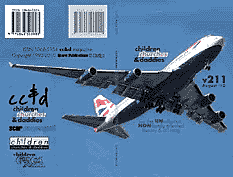



|
This writing was accepted for publication in the 84 page perfect-bound issue... cc&d magazine (v211) (the August 2010 Issue) |

|
Order this issue from our printer as an ISSN# paperback book: or as the ISBN# book “come fly with me”: |
|
| ||
Good Old MPUI and Other Merry Pranks
Mary Campbell
It is no accident that modern information-technology history all but began the day I was born (October 23, 1947). My birth, in fact, coincides with the formation of the Association for Computing Machinery. Which is why I am sure that the Bittorrent Client and Pareto front are part of The Big Con.
|
· Dawn of Era of Verbing, with nouns such as interface appropriated for simultaneous use as verbs. · Mutual suspicion erupting into overt hostility as ordinary people receive electric bills for $17,009.83 and college students enrolling in “History of the Napoleonic Era” end up in “Marine Biology Practicum” doing shrimp census in Gulf of California. · Gangs raiding corporate offices, seizing punch cards to Staple, Punch, Fold, Spindle, and Tear. · Regression to older, less threatening technologies (carbon-paper consumption surges). |
![]()




